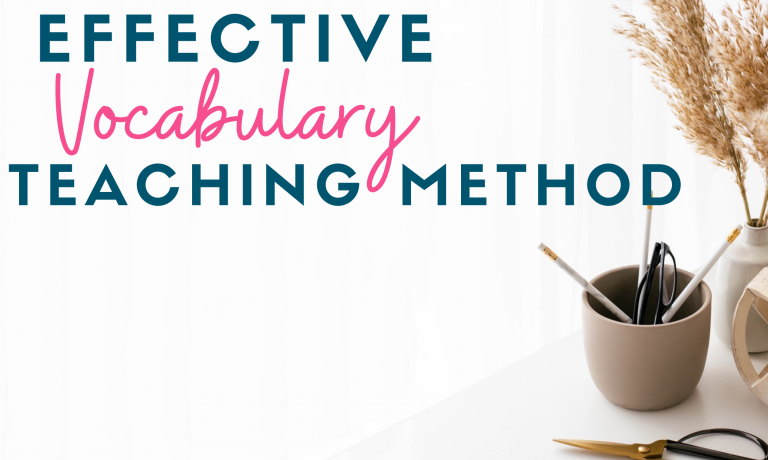When I first began teaching I didn’t have an effective vocabulary teaching strategy, so I combed through each book writing down every word I thought my students may need to practice. I used this extensive list and made flash cards, created practice pages, and invented games. My students were able to make passing grades on vocabulary tests, many made 100%, at the end of the units. However, I soon discovered the words were only staying in the students’ short term memories. the words were not becoming part of the students’ oral or written vocabulary. Also, when I gave review tests several months later, the test scores were low. At this point, I realized I needed to change my vocabulary teaching strategy and found a much more successful teaching method.
Here’s how my effective vocabulary teaching method works:
I select no more than two words a day. With a restrictive number of words, I am able to practice every word, every day while teaching the unit. Students will hear the words over and over again, which is essential for long-term memory. I also select a large number of synonyms for each vocabulary word to use in this daily study. Many of these synonyms are selected to enhance vocabulary development as well.
Every day, I have students create vocabulary cards with these words. [Note: I have included printable cards in each of my novel study packets for this, or you may use index cards.]
Step One:
On one side of the index card, I have students write the vocabulary word in large letters, so that they may be used as a response card. For daily practice, students spread out their index cards with the words facing up on their desktops. The teacher calls out definitions, synonyms, antonyms or sentences with missing words, etc. Students locate the correct word and hold up the card. This is an effective vocabulary teaching method because the teacher is able to check to determine if students need additional practice or if most know the word.
Also, each student is participating with each teacher request – the every student, every time theory.
Step Two:
- When teaching a new word, I have students create word webs or write definitions on the reverse side of the card. A word such as encyclopedia will need a definition whereas inspire would be an ideal word for a word web. I usually read the sentence from the text in which the word may be found. [I also include this in my novel study packets.] The student must use context clues to determine the meaning of the word. As students name synonyms or come up with a great definition, I will write it on the board for the students to copy on their cards.
- I always have students determine which part of speech the word is as it is used in the sentence from the text. This is written on the back of the card as well. [The part of speech for each word is also listed in the vocabulary lists that I provide.]
Step Three:
- Next, I call on students to use the word in sentences. To mix things up, we sometimes write the sentences on the card backs and other times this is just oral practice.
- Some words need an illustration. for example, microscope would be a great word for students to draw quick sketches next to their definitions, in place of writing sentences, on the back of their cards.
To differentiate instruction, you may have some students draw their illustrations on the front of the card.
